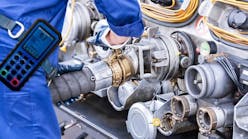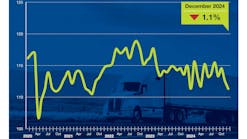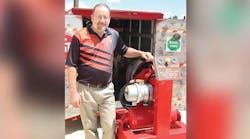PIT Group, a research and engineering group focused on improving fleet maintenance and operations in the North American transportation industry, recently announced study results indicating that driver fuel efficiency and safety training is only effective if it includes refresher courses. The study also showed the benefit of in-vehicle technologies to reinforce good practices and address weaknesses, ideally in real-time.
“While vehicle technology designed to improve fuel economy continues to advance, driver training is the element that has the largest impact on fuel consumption,” said Yves Provencher director, market and business development at PIT Group. “Our studies show that various ways to train drivers, including classroom, in-cab and simulator training, all have their advantages.
“However, the lessons and techniques they teach don’t last without monitoring behaviors that impact fuel use and safety. Providing refresher training and in-vehicle coaching technologies that address bad habits and reinforce effective skills is what’s needed to maintain and improve fuel efficient and safe performance on a regular basis.”
In one study on fuel efficiency performance, PIT Group compared 47 control and 38 test longhaul drivers before and after simulator training that focused on specific elements, including speed, boost pressure, braking, acceleration, and RPM. Initial baseline performance measures were established over a period of two months before test drivers were trained. After training, evaluations were performed at one, three, six and nine months.
“The largest impacts on fuel consumption in long haul operations were the use of cruise control, proper acceleration and maintaining the correct engine and road speed,” Provencher said. “With close monitoring and communication with drivers, including frequent reminders of how efficiently they were performing, the test data show that long haul drivers operating a truck an average of 156,000 miles per year could save 2,640 gallons of fuel annually.”
Provencher also reported on a PIT Group test that illustrates the value of employing advanced fuel saving technologies. In particular, a group of 35 regional haul drivers were monitored for nine months, including 22 operating a manual transmission and 13 an automated manual transmission.
In this case, the drivers with manual transmissions would shift in the most fuel efficient range (1,000 to 1,400 RPM) 55% of the time while drivers with automated transmissions were in the most efficient range 78% of the time. Additionally, the average RPM for drivers with manual transmissions was 1,316 versus 1,240 RPM for drivers with automated manual transmissions. The result, Provencher said, was a 5% fuel savings in favor of automated manual transmissions.
“What these and other studies tell us is that training is only effective if it is reinforced with new ideas and structured to include regular reminders,” he said. “Many companies make the mistake of providing the same training year after year without focusing on weaknesses or adding new ideas to make the lessons more interesting and effective.
“Regardless of the type of training and its initial effectiveness, it is human nature to revert to old habits unless we are constantly reminded what works best. In the end, the type of training really doesn’t matter as much as the monitoring that takes place afterward.”









